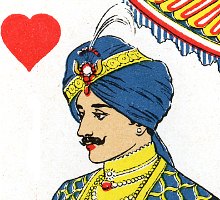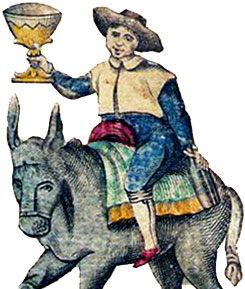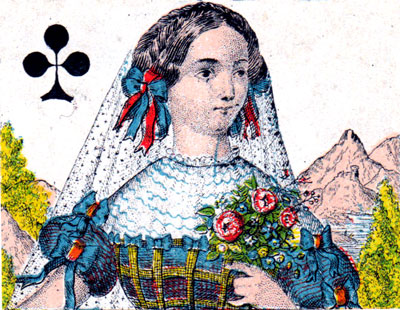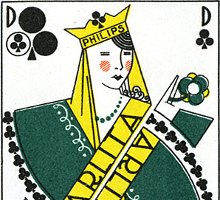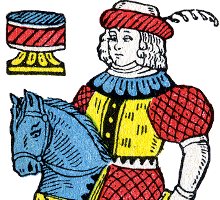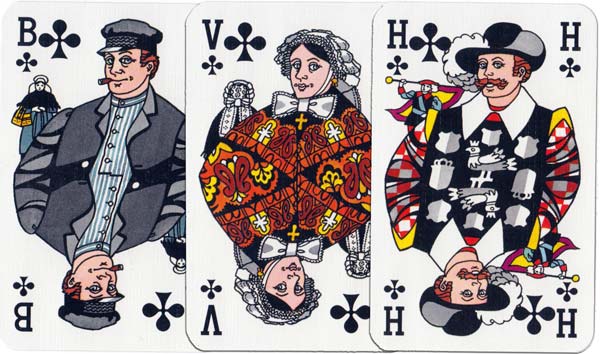Belgian Playing Cards
Belgian cardmakers have been actively designing and exporting playing cards since the 14th century.
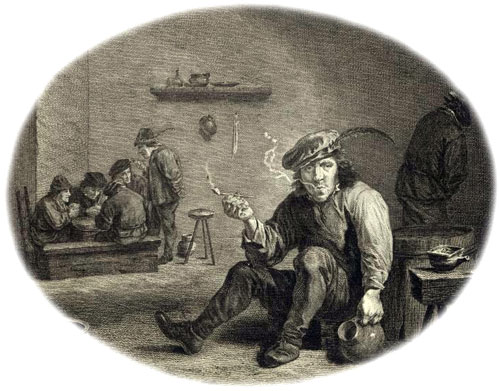
Belgian cardmakers have been actively designing and exporting playing cards since the 14th century. Some of the earliest documentary evidence about playing cards in Europe emanates from Belgium: accounts for money spent on playing cards; money lost whilst playing at cards, etc. This can partly be explained by the large number of paper manufacturers established in the area since the 14th century.
Cardmakers were usually regulated by the guild of painters in their area, and numerous accusations, complaints, orders and protections are recorded relating to cardmakers seeking to protect their monopolies over the years. There were also complaints of counterfeit goods of inferior quality with forged trade marks being smuggled into neighbouring France (Cremers, 1994).
Local areas of production emerged, such as Tournai, Namur, Liège, Amsterdam, Brussels & Dinant. Antwerp was a centre of playing card production in the 16th century. An intriguing deck featuring an obsolete Portuguese pattern with dragon aces survives by Gilis van den Bogarde dated 1567 here
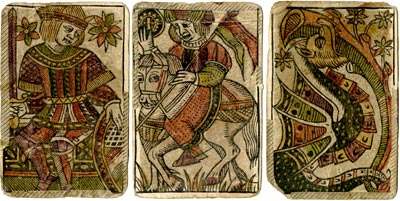
Above: cards by Gilis van den Bogarde, Antwerp 1567. These had a major influence on several styles of Japanese playing cards, after cards were introduced by Portuguese merchants.
A wrapper dated 1676, with the coat-of-arms of the Spanish branch of the Habsburgs, by Jean Constant Remy, Namur here►
Other Belgian cardmakers include Nicolas Bodet in Brussels, Gerard Bodet in Liège, J.-B Galler and François-Jean Vandenborre in Brussels, E.A Daveluy in Bruges, the Dubois firm in Liège. Belgian playing card designs were largely subjugated to local variations of French and German patterns, including tarot cards. What has become known as the standard Belgian pattern replaced earlier patterns in around 1900.
Since the nineteenth century playing cards became the most spectacular offshoot of the Turnhout printing industry. The principal card makers in Turnhout were: Brepols (1826-1970), Van Genechten (1856-1970), Glénisson (1837-99), Mesmaekers (1859-1968), Biermans (1875-1970), La Turnhoutoise (1881-1960), all of which eventually all merged into Carta Mundi (1970-present).
These manufacturers tended to offer a similar range of cards and were in close competition with each other. Some of the most common or ‘standard’ patterns associated with Belgian cardmakers are the following:
- The Bongoût pattern
- Cartes Allemandes
- Cartes Belges
- Cartes Fines
- Cartes Françaises
- Cartes Hollandaises
- Cartes Italiennes and Parisiennes
- Cartes Liégeoises
- Cartes Royales
- Cartes Suisses
- Cartes Turques
- Portuguese cards
- Spanish 'Naipes'
- Cards for the Far East
- Great Moghul
During the nineteenth century Belgian manufacturers exported worldwide, extending their markets by producing “Chinese” cards for export to South-East Asian countries including Java, Sumatra, the Celebes, Thailand and possibly China as well.
Carta Mundi
After almost 200 years Turnhout is still a world centre for playing card production and Carta Mundi - a symbolic name indeed! - takes care that Turnhout playing cards will always "turn up trumps"...
Nationaal Museum van de Speelkaart

In 1983 the Nationaal Museum van de Speelkaart was established in Turnhout, housed in a former Mesmaekers annex. The museum contains historic manufacturing machinery, numerous exhibits with plenty of information and is well worth a visit.

Above: antique printing presses from the Turnhout Playing Card Museum collection.
See also: Brepols & Dierckx 'Bongoût' with Scenic Aces for Brasil, c.1885 • Jeu de Cartes Estétique Nº1 • World War I Commemorative, 1919 • Biermans Scenic Aces for Brasil, c.1920 • A Todos Alumbra, c.1920 • Dilkhus, 1922 • Philips Arlita, 1925 • Brepols Scenic Aces for Brasil, c.1930 • L'Union Fait la Force, 1945 • Renée Sturbelle, 1947 • Low-Vision • Brussels Euro Joker Club 1998 • Superman • Carta Mundi Trumps Car Series • Carta Mundi Dutch pattern • Carta Mundi Spanish pattern • P&O European Shipping • P&O Stena Shipping • Fake Blanchard duty Ace of Spades.
In its technical presentation and the aesthetic aspect imparted to it, a playing card remains a faithful reflection of the period which produced it.

Above: double-ended provincial variant of the 'Paris' pattern which had spread to the Low Countries from Northern France, manufactured in Belgium, woodblock & stencil printing technology, c.1780-1810. See another example►

Above: assorted Belgian playing cards, 19th century: a) English style by Mesmaekers, b) Daveluy, 1870, c) Spanish-suited card, 4) Brepols & Dierckx & Son, c.1865.

Above: assorted playing card designs, 20th century, by Biermans see more →
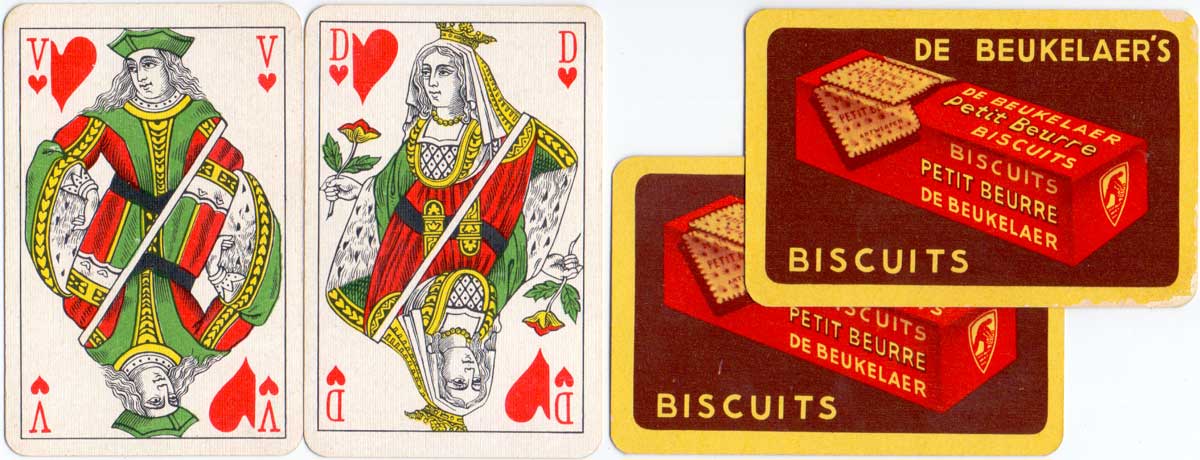
Above: Belgian pattern manufactured by Brepols for De Beukelaer’s Biscuits, c.1950.
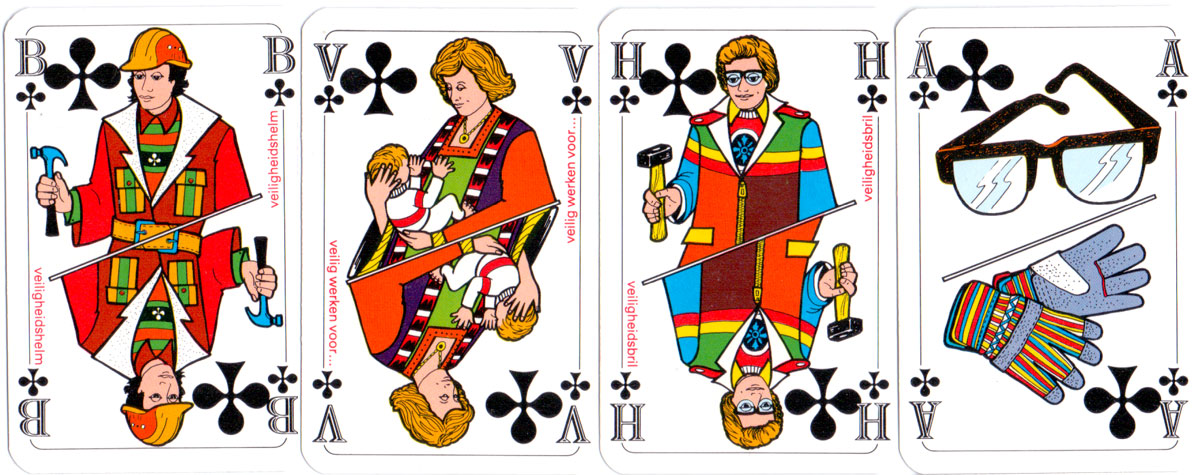
Above: BG Bouw Dutch Building Company publicity deck manufactured by Carta Mundi, c.1980.
REFERENCES
Autenboer, Dr Eugeen van: The Turnhout Playing Card Industry 1826-1976, Aurelia Books, Brussels 1976
Cremers, Filip: Kaartenmakers in Wallonië - Cartiers en Wallonie, Nationaal Museum van de Speelkaart, Turnhout, 1994
Turnhout: National Museum of the Playing Card►
Carta Mundi website (includes a history section).
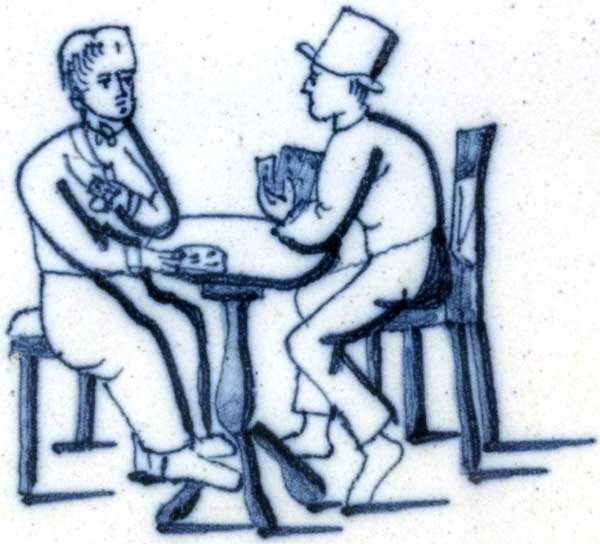
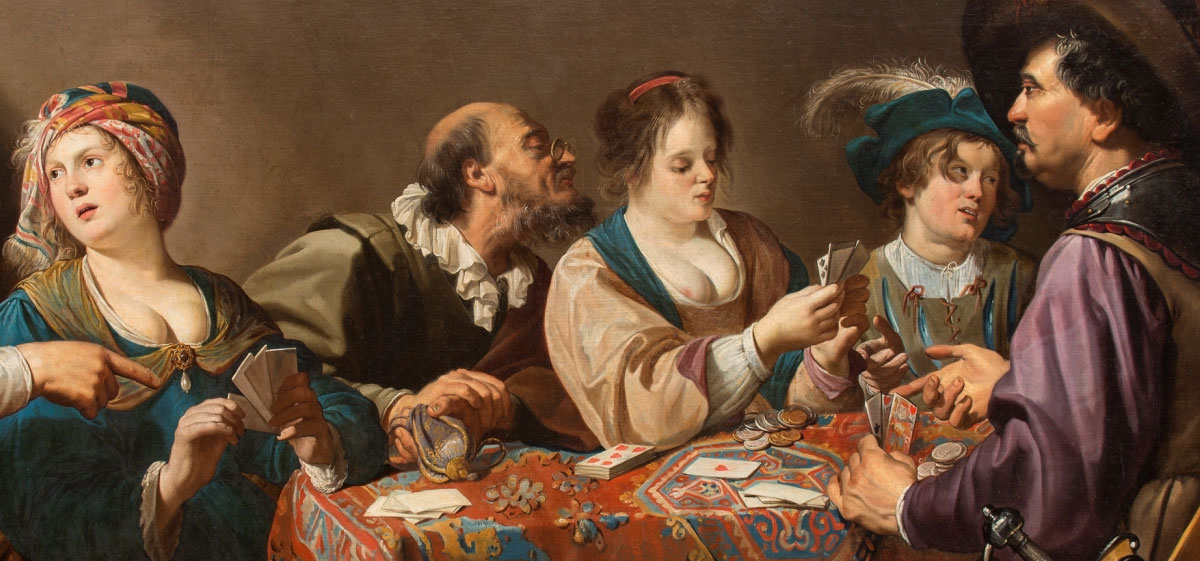
Above: detail from Card Players by Flemish painter Theodoor Rombouts, Museo del Prado, Madrid.

Above: card players at Loenhout, c.1950s.
Belgian beer labels
Connotations of playing cards and jokers from Belgian brewery.
We are born and all live in Turnhout. Turnhout is the playing card city of Belgium. We have the national playing card museum and of course the worldwide leader of playing card production, CartaMundi. So it was logical for us to work with playing card names for our beers. Het Nest Brouwerij►

Above: playing card-themed beer labels, Het Nest Brouwerij, Turnhout, 2021. Turnhout is, of course, the city of playing cards.
• See also Het Nest Brouwerij playing cards►
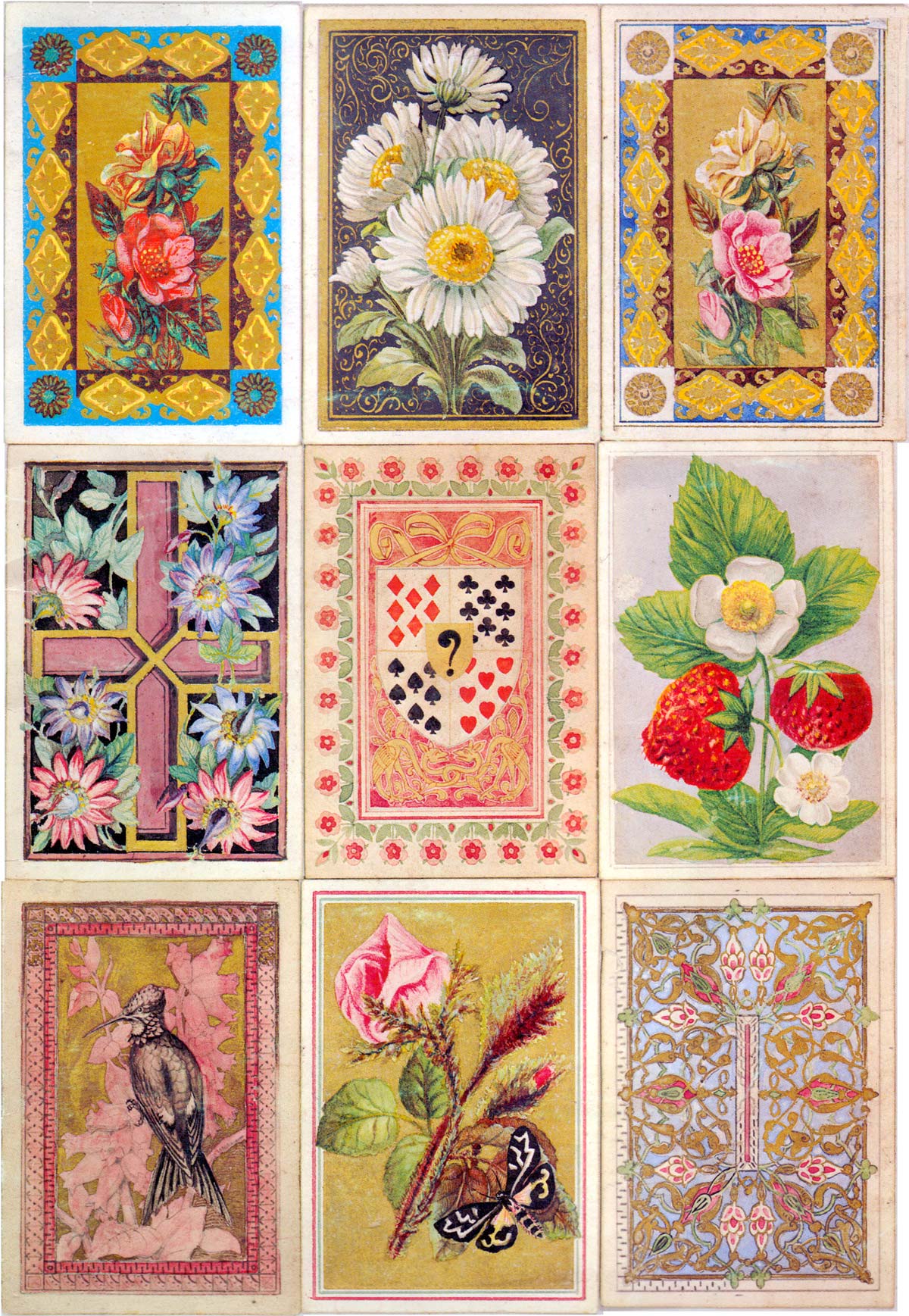

By Simon Wintle
Member since February 01, 1996
I am the founder of The World of Playing Cards (est. 1996), a website dedicated to the history, artistry and cultural significance of playing cards and tarot. Over the years I have researched various areas of the subject, acquired and traded collections and contributed as a committee member of the IPCS and graphics editor of The Playing-Card journal. Having lived in Chile, England, Wales, and now Spain, these experiences have shaped my work and passion for playing cards. Amongst my achievements is producing a limited-edition replica of a 17th-century English pack using woodblocks and stencils—a labour of love. Today, the World of Playing Cards is a global collaborative project, with my son Adam serving as the technical driving force behind its development. His innovative efforts have helped shape the site into the thriving hub it is today. You are warmly invited to become a contributor and share your enthusiasm.
Related Articles

An Anonymous Belgian Transformation Pack
Anonymous Belgian transformation pack borrowing many images from earlier designs by Braun & Schneide...

Blake et Mortimer – La Marque Jaune
Blake and Mortimer comic strip characters created by Edgar P. Jacobs.

Santo Mexico playing cards
Santo Mexico playing cards designed by Cédric Volon with Mexico-associated symbols.

Gallia Belgica playing cards
Gallia Belgica playing cards by Cédric Volon presenting a view of Belgian culture and folklore.

Historical Characters
Double-ended deck with historical characters and jacks as jesters by Daveluy, c.1850.

Mademoiselle Lenormand
XIX century ‘Mlle Lenormand’ cartomancy deck by Daveluy, Bruges.

Printing Presses
Antique printing presses from the Turnhout Playing Card Museum collection.

Club Soft Drinks
Promotional pack for Club soft drinks with amusing illustrations of different kinds of ‘club’.

High School Musical 3: Senior Year
American teen film depicting students staging their last spring musical.

Jeu Quatre Empereurs
Brazilian scenic aces with emperors of Brazil, Austria and France and other dignitaries on the court...

Animal Tarot by J. B Dubois
French-suited Bavarian Animal Tarot by J B Dubois, Liège, Belgium, late 18th C.

Animal Tarot by J. T Dubois
Early 19th century Animal Tarot pack produced by J T Dubois, Liège, Belgium.

Animal Tarot by G. Larmoyer
Flemish Animal Tarot deck by G. Larmoyer, Liège, 1753.

Louis De Poortere
Psychedelic designs promoting Louis De Poortere, a company selling carpets and rugs.

Een Kaartspel
Minimalist playing cards from The Netherlands

Old School Playing cards from Moon
Designed and published by Leo Scherfig
Most Popular
Our top articles from the past 28 days




